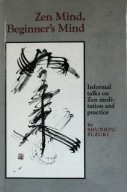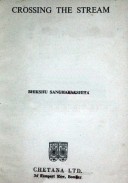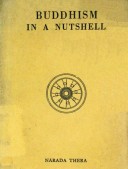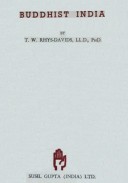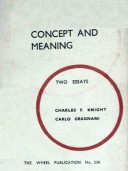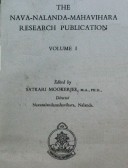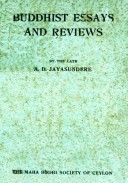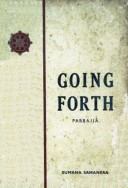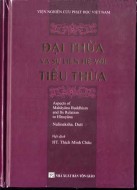Tìm Sách
Sách tiếng Anh-English >> Zen Mind, Beginner’s Mind
Thông tin tra cứu
- Tên sách : Zen Mind, Beginner’s Mind
- Tác giả : Shunryu Suzuki
- Dịch giả :
- Ngôn ngữ : Anh
- Số trang : 138
- Nhà xuất bản : Weather Hill-Newyork
- Năm xuất bản : 1970
- Phân loại : Sách tiếng Anh-English
- MCB : 1210000008193
- OPAC :
- Tóm tắt :
PREFACE
Two Suzukis. A half-century ago, in a transplant that has been likened in its historical importance to the Latin translations of Aristotle in the thirteenth century and of Plato in the fifteenth, Daisetz Suzuki brought Zen to the West single-handed. Fifty years later, Shunryu Suzuki did something almost as important. In this his only book, here issued for the first time in paperback, he sounded exactly the follow-up note Americans interested in Zen need to hear.
Whereas Daisetz Suzuki’s Zen was dramatic, Shunryu Suzuki’s is ordinary. Satori was focal for Daisetz, and It was in large part the fascination of this extraordinary state that made his writings so compelling. In Shunryu Suzuki’s book the words satori and kensho, its near-equivalent, never appear.
When, four months before his death, I had the opportunity to ask him why satori didn’t figure In his book, his wife leaned toward me and whispered impishly, “It’s because he hasn’t had it”; whereupon the Roshl batted his fan at her in mock consternation and with finger to his lips hissed, “Shhhh! Don’t tell him!” When our laughter had subsided, he said simply, “It’s not that satori is unimportant, but it’s not the part of Zen that needs to be stressed.”
Suzuki-roshi was with us, in America, only twelve years— a single round in the East Asian way of counting years in dozens—but they were enough. Through the work of this small, quiet man there is now a thriving Soto Zen organization on our continent. His life represented the Soto Way so perfectly that the man and the Way were merged. “His non-ego attitude left us no eccentricities to embroider upon. Though he made no waves and left no traces as a personality in the worldly sense, the impress of his footsteps in the invisible world of history lead straight on.” His monuments are the first Soto Zen monastery in the West, the Zen Mountain Center at Tassajara; its city adjunct, the Zen Center in San Francisco; and, for the public at large, this book.
Leaving nothing to chance, he prepared his students for their most difficult moment, when his palpable presence would vanish into the void:
If when I die, the moment I’m dying, if I suffer that is all right, you know; that is suffering Buddha. No confusion in it. Maybe everyone will struggle because of the physical agony or spiritual agony, too. But that is all right, that Is not a problem. We should be very grateful to have a limited body… like mine, or like yours. If you had a limitless life it would be a real problem for you.
And he secured the transmission. In the Mountain Seat ceremony, November 21, 1971, he installed Richard Baker as his Dharma heir. His cancer had advanced to the point where he could march in the processional only supported by his son. Even so, with each step his staff banged the floor with the steel of the Zen will that informed his gentle exterior. Baker received the mantle with a poem:
This piece of incense
Which I have had for a long long time
I offer with no-hand
To my Master, to my friend, Suzuki Shunryu Daiosho
The founder of these temples.
There is no measure of what you have done.
Walking with you In Buddha’s gentle rain
Our robes are soaked through,
But on the lotus leaves
Not a drop remains.
Two weeks later the Master was gone, and at his funeral on December 4 Baker-roshi spoke for the throng that had assembled to pay tribute:
There is no easy way to be a teacher or a disciple, although it must be the greatest joy in this life. There is no easy way to come to a land without Buddhism and leave it having brought many disciples, priests, and laymen well along the path and having changed the lives of thousands of persons throughout this country; no easy way to have started and nurtured a monastery, a city community, and practice centers in California and many other places in the United States. But this “no-easy-way,” this extraordinary accomplishment, rested easily with him, for he gave us from his own true nature, our true nature. He left us as much as any man can leave, everything essential, the mind and heart of Buddha, the practice of Buddha, the teaching and life of Buddha. He is here in each one of us, if we want him.
HUSTON SMITH
Professor of Philosophy
Massachusetts Institute of Technology
INTRODUCTION
For a disciple of Suzuki-roshi, this book will be Suzukl-roshl’s mind—not his ordinary mind or personal mind, but his Zen mind, the mind of his teacher Gyokujun So-on-dáiosho, the mind of Dogen-zenji, the mind of the entire succession—broken or unbroken, historical and mythical—of teachers, patriarchs, monks, and laymen from Buddha’s time until today, and it will be the mind of Buddha himself, the mind of Zen practice’. But, for most readers, the book will be an example of how a Zen master talks and teaches. It will be a book of instruction about how to practice Zen, about Zen life, and about the attitudes and understanding that make Zen practice possible. For any reader, the book will be an encouragement to realize his own nature, his own Zen mind.
Zen mind is one of those enigmatic phrases used by Zen teachers to make you notice yourself, to go beyond the words and wonder what your own mind and being are. This is the purpose of all Zen teaching—to make you wonder and to answer that wondering with the deepest expression of your own nature. The calligraphy on the front of the binding reads nyorai in Japanese or tathagata in Sanskrit. This is a name for Buddha which means “he who has followed the path, who has returned from suchness, or is suchness, thusness, is-ness, emptiness, the fully completed one.” It is the ground principle which makes the appearance of a Buddha possible. It is Zen mind. At die time Suzuki-roshi wrote this calligraphy— using for a brush the frayed end of one of the large swordlike leaves of the yucca plants that grow in the mountains around Zen Mountain Center—he said: “This means that Tathagata is the body of the whole earth.”
The practice of Zen mind is beginner’s mind. The innocence of the first inquiry—what am I?—is needed throughout Zen practice. The mind of the beginner is empty, free of the habits of the expert, ready to accept, to doubt, and open to all the possibilities. It is the kind of mind which can see things as they are, which step by step and in a flash can realize die original nature of everything. This practice of Zen mind is found throughout the book. Directly or sometimes by inference, every section of the book concerns the question of how to maintain this attitude through your meditation and in your life. This is an ancient way of teaching, using die simplest language and the situations of everyday life. This means the student should teach himself.
Beginner’s mind was a favorite expression of Dogen-zenji’s. The calligraphy of the frontispiece, also by Suzuki-roshi, reads shoshin, or beginner’s mind. The Zen way of calligraphy is to write in the most straightforward, simple way as if you were a beginner, not trying to make something skillful or beautiful, but simply writing with full attention as if you were discovering what you were writing for the first time; then your full nature will be in your writing. This is the way of practice moment after moment.
This book was conceived and initiated by Marian Derby, a close disciple of Suzuki-roshi and organizer of the Los Altos Zen group. Suzuki-roshi joined the zazen meditations of this group once or twice a week, and after each meditation period he would talk to them, encouraging their practice and helping them with their problems. Marian taped his talks and soon saw that as the group developed the talks acquired a continuity and development which would work well as a book and could be a much-needed record of Suzuki-roshi’s remarkable spirit and teaching. From her transcriptions of talks made over a period of several years, she put together the first draft of the present book.
Then Trudy Dixon, another close disciple of Suzuki-roshi who had much experience editing Zen Center’s publication, Wind Bell, edited and organized the manuscript for publication. It is no easy task to edit this kind of book, and explaining why will help the reader understand the book better. Suzuki-roshi takes the most difficult but persuasive way to talk about Buddhism—in terms of the ordinary circumstances of people’s lives—to try to convey the whole of the teaching in statements as simple as “Have a cup of tea.” The editor must be aware of the implications behind such statements in order not to edit out for the sake of clarity or grammar the real meaning of the lectures. Also, without knowing Suzuki-roshi well and having experience working with him, it is easy to edit out for the same reasons the background understanding that Is his personality or energy or will. And it is also easy to edit out the deeper mind of the reader which needs the repetition, the seemingly obscure logic, and the poetry in order to know itself. Passages which seem obscure or obvious are often illuminating when they are read very carefully, wondering why this man would say such a thing.
The editing is further complicated by the fact that English is profoundly dualistic in its basic assumptions and has not had the opportunity over centuries to develop a way of expressing non-dualistic Buddhist ideas, as has Japanese. Suzuki-roshi uses these different cultural vocabularies quite freely, expressing himself in a combination of the Japanese feeling- attributive way of thinking and the Western specific-idea way that to his listeners makes perfect sense poetically and philosophically. But in transcriptions, the pauses, rhythm, and emphasis that give his words their deeper meaning and hold his thoughts together are apt to be lost. So Trudy worked many months by herself and with Suzuki-roshi to retain his original words and flavor, and yet produce a manuscript that is in understandable English.
Trudy divided the book according to emphasis into three sections—Right Practice, Right Attitude, and Right Understanding—roughly corresponding to body, feeling, and mind. She also chose the titles for the talks and the epigraphs that follow the titles, these being taken usually from the body of the lectures. The choices are of course somewhat arbitrary, but she did this to set up a kind of tension between the specific sections, titles, and epigraphs, and the talks themselves. The relationship between the talks and these added elements will help the reader probe the lectures. The only talk not given originally to the Los Altos group is the Epilogue, which is a condensation of two talks given when Zen Center moved into its new San Francisco headquarters.
Shortly after finishing work on this book, Trudy died of cancer at the age of thirty. She is survived by her two children, Annie and Will, and her husband, Mike, a painter. He contributed the drawing of the fly on page 69. A Zen student for many years, when asked to do something for this book, he said: “I can’t do a Zen drawing. I can’t do a drawing for anything other than the drawing. I certainly can’t see doing drawings of zafu [meditation pillows] or lotuses or ersatz something. I can see this idea, though.” A realistic fly often occurs in Mike’s paintings. Suzuki-roshi is very fond of the frog, which sits so still it might be asleep, but is alert enough to notice every insect which comes by. Maybe the fly is waiting for the frog.
Trudy and I worked together in a number of ways on the book and she asked me to complete the editing, write the introduction, and see to its publication. After considering several publishers, I found that John Weatherhill, Inc., through Meredith Weatherby and Audie Bock, were able to polish, design, and publish this book in exactly the way it should be published. The manuscript was read before publication by Professor Kogen Mizuno, head of the Buddhist Studies Department, Komazawa University, and an outstanding scholar of Indian Buddhism. He generously helped with the transliteration of the Sanskrit and Japanese Buddhist terms.
Suzuki-roshi never talks about his past, but this much I have pieced together. He was the disciple of Gyokujun So-on-daiosho, one of the leading Soto Zen masters of the time. Of course he had other teachers too, one of whom emphasized a deep and careful understanding of the sutras. Suzuki-roshi’s father was also a Zen master, and, while still a boy, Suzuki began his apprenticeship under Gyokujun, a disciple of his father’s. Suzuki was acknowledged a Zen master when he was rather young, I think at about the age of thirty. His responsibility in Japan included many temples and a monastery, and he was responsible for rebuilding several temples. During the Second World War he was the leader of a pacifist group in Japan. He had been interested in coming to America when he was young, but had long given up the idea when he was asked by a friend to go to San Francisco for one or two years to lead the Japanese Soto Buddhist congregation there.
In 1958, when he was fifty-three, he came to America. After postponing his return several times, he decided to stay in America. He stayed because he found that Americans have a beginner’s mind, that they have few preconceptions about Zen, are quite open to it, and confidently believe that it can help their lives. He found they question Zen in a way that gives Zen life. Shortly after his arrival several people stopped by and asked if they could study Zen with him. He said he did zazen early every morning and they could join him if they liked. Since then a rather large Zen group has grown up around him—now in six locations in California. At present he spends most of his time at Zen Center, 300 Page Street, San Francisco, where about sixty students live and many more do zazen regularly, and at Zen Mountain Center at Tassajara Springs above Carmel Valley. This latter is the first Zen monastery in America, and there another sixty or so students live and practice for three-month or longer periods.
Trudy felt that understanding how Zen students feel about their teacher might, more than anything else, help the reader to understand these talks. What the teacher really offers the student is literally living proof that all this talk and the seemingly impossible goals can be realized in this lifetime. The deeper you go in your practice, the deeper you find your teacher’s mind is, until you finally see that your mind and his mind are Buddha’s mind. And you find that zazen meditation is the most perfect expression of your actual nature. The following tribute from Trudy to her teacher describes very well the relationship between Zen teacher and Zen student:
“A roshi is a person who has actualized that perfect freedom which is the potentiality for all human beings. He exists freely in the fullness of his whole being. The flow of his consciousness is not the fixed repetitive patterns of our usual self-centered consciousness, but rather arises spontaneously and naturally from the actual circumstances of the present. The results of this in terms of the quality of his life are extraordinary—buoyancy, vigor, straightforwardness, simplicity, humility, serenity, joyousness, uncanny perspicacity and unfathomable compassion. His whole being testifies to what it means to live in the reality of the present. Without anything said or done, just the impact of meeting a personality so developed can be enough to change another’s whole way of life. But in the end it is not the extraordinariness of the teacher which perplexes, intrigues, and deepens the student, it is the teacher’s utter ordinariness. Because he is just himself, he is a mirror for his students. When we are with him we feel our own strengths and shortcomings without any sense of praise or criticism from him. In his presence we see our original face, and the extraordinariness we see is only our own true nature. When we learn to let our own nature free, the boundaries between master and student disappear in a deep flow of being and joy in the unfolding of Buddha mind.”
RICHARD BAKER
Kyoto, 1970
CONTENTS
Preface, by Huston Smith
Introduction, by Richard Baker
Prologue: Beginner’s Mind
Part I Right Practice
Posture……………………25
Breathing……………………29
Control……………………31
Mind Waves……………………34
Mind Weeds……………………36
The Marrow of Zen……………………38
No Dualism……………………41
Bowing……………………43
Nothing Special……………………46
Part 2 Right Attitude
Single-minded Way……………………53
Repetition……………………55
Zen and Excitement……………………57
Right Effort……………………59
No Trace……………………62
God Giving……………………65
Mistakes in Practice……………………71
Limiting Your Activity……………………75
Study Yourself……………………76
To Polish a Tile……………………80
Constancy……………………83
Communication……………………86
Negative and Positive……………………90
Nirvana, the Waterfall……………………92
Part 3 Right Understanding
Traditional Zen Spirit……………………99
Transiency……………………102
The Quality of Being……………………104
Naturalness……………………107
Emptiness no Readiness, Mindfulness……………………113
Believing in Nothing……………………116
Attachment, Non-attachment……………………118
Calmness……………………121
Experience, Not Philosophy……………………123
Original Buddhism……………………125
Beyond Consciousness……………………127
Buddha’s Enlightenment……………………131
Epilogue: Zen Mind……………………133
 Facebook
Facebook
 Google
Google
 Google+
Google+
